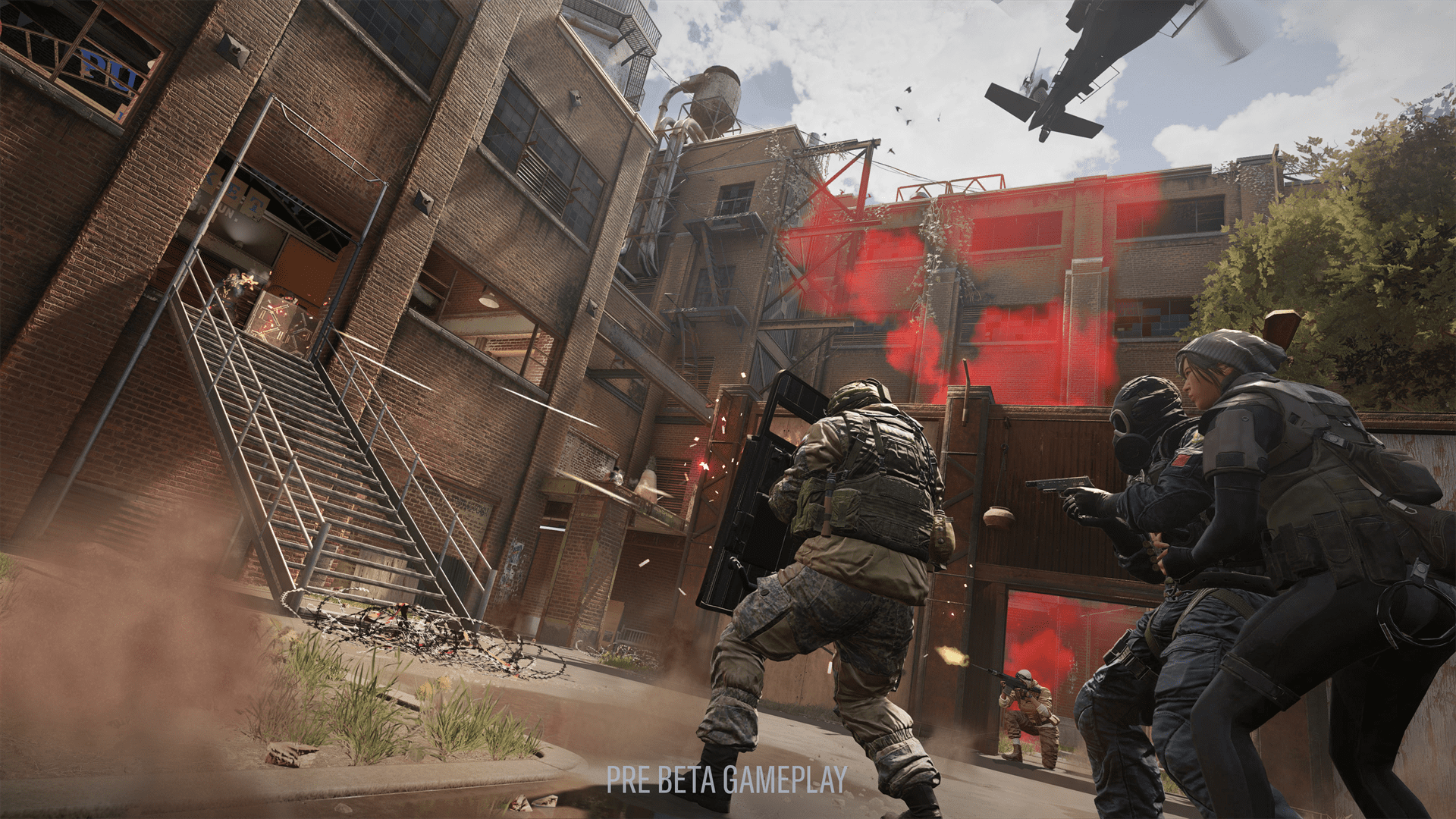[Contributed by Justin C, edited by Franz Christian Irorita]
Rainbow Six Siege’s upcoming Siege X update is perhaps Ubisoft’s way to assure fans that the ten-year-old game is here to stay. And not in an “it’s going to stick around and you’ll be able to play it” kind of way, but rather more of a “fans should remain excited about the future because we’ll continue adding more content for this game.” We’ve had the chance to play Siege X early and even more during the Closed Beta period, and here are our first impressions of the upcoming update, as well as the new game mode, Dual Front.
First announced during last year’s The Six Invitational, Siege X raised a lot of questions from the playerbase. What is it, exactly? Is it a full blown sequel? A game mode? A limited time event? Or perhaps, Ubisoft’s finally giving what a lot of us has been asking for all these years – a single-player focused Rainbow Six Siege game? The answer is, to some degree, all of the above, except for the single-player part.
Like most games-as-a-service today, Siege X is going to be a massive overhaul to a ten-year old game, bringing engine improvements, new gameplay options, and new content for its fanbase, giving Siege X a fresh, modernized look that makes it much more appealing to newcomers and will make it look ten times better than what oldies would remember from launch. For a more tangible comparison, this could be compared to Fortnite’s jump from Unreal Engine 4 to 5 a few years ago.
Primarily, the new engine overhauls the graphical look and feel of Siege maps. It moves to a more vibrant color scheme with better textures and lighting while still trying to maintain an air of realism compared to its tactical shooter brethren. In certain scenarios, it very much resembles the graphical direction of Call of Duty’s Modern Warfare series. It might be another divisive point to many fans, but to me, personally, for someone who plays the game casually, the brighter graphic style that pops up more makes it easier to spot enemies. Sound has also been redesigned from the ground up, allowing for players to hear sounds more precisely and use it for tactical advantage, although at the moment there are some bugs we’ve experienced in the builds we’ve played.
The engine update also introduced new elements to the game’s maps. At release, the game will introduce two new map elements while revitalising a third. Fire extinguishers produce a cloud of smoke when shot, the denial of vision allowing for some sneaky movement and repositioning. Gas tubes offer a new way of denying area. When shot, it produces a stream of fire that torches anyone that passes through it. After some time, or when the tubes are shot again, they explode leaving fire on the floor, making the area impossible to pass through. Metal detectors, which are prominent in the Bank and Checkpoint maps, can now be partially or fully disabled, allowing players more ways to mess with their opponents through annoying sound queues.
These are welcome new tools that players can use to mess around with their opponent, and are definitely some things you can use to area deny enemies in the new Dual Front game mode, which cares so much about area denial even more so compared to the core game mode. We’ve been victims to these tools throughout our playthroughs, as we tend to forget that these tools are now at our disposal, but we’re happy to report that being the butt end of these new elements are in general very effective.
Which brings us to Siege X’s new game mode, Dual Front. Eschewing the Attack/Defend round system that Siege has had from the very beginning, Dual Front is a new 6v6 game mode that puts both teams on the offensive and the defensive at the same time.
Contrary to the core gameplay we’ve been accustomed to, Dual Front is a faster-paced game mode with a larger map that encourages players to move around the map and play both attack and defense at the same time. The game mode also enables time-based respawn instead of round-based respawn, allowing players to hop back into the fight just 30 seconds after they get downed.
Players are also free to switch during their respawn period, so they’re not locked into an operator that might be the bad pick for their current situation. These encourages players to be more experimental and adapt to the situation. This allows players to play around with gadgets and discover their effectiveness when used for both the offensive and the defensive, showing us how versatile the gadgets are actually designed in the first place.
The map is also symmetrical, allowing players to easily learn how to attack and defend bases in a shorter amount of time. The operator pool, however, is limited and shifts twice a season according to the devs. The game also introduces a season-specific neutral objective, which supposedly evolves and changes with Siege’s ongoing story, and rotates every season. The one we got during the test period is a hostage rescue operation which mostly draws the entire map to one concentrated point on the map, often leading to a bloodbath and a tug-of-war for the hostage being rescued. The momentary distraction pulls players away from the attack/defend mentality and gives people an opportunity to go guns-blazing in all-out clashes that rely more on shooting and positioning than the use of gadgets.
All these features are clearly built for one purpose: To get more people to play the game. Siege is notoriously known to have a learning wall that can put off a lot of people. Its tactical and strategic complexity can perhaps only be rivaled by few other esports, and is both the strength and weakness of Siege as a competitive sport. But by building Dual Front, Ubisoft created a way to introduce Siege concepts without asking people to commit so much time for the core 5v5 game mode. It eases players into learning the proper concepts needed to execute attacks and defenses such as drone clearing, rappelling, breaching, fortification, and so on, on a much more relaxed environment that requires less precision for success.
It’s also worth noting that the new update will introduce “Free Access,” which definitely ties into Dual Front’s approach towards new players. Ubisoft will now be offering a free-to-play sampler of Rainbow Six Siege, effectively giving new players free access to casual game modes (including Dual Front) and a dozen or so Operators. Locked behind a paywall now is the full roster of Operators and access to Ranked Games, which is definitely something only the more dedicated players would be interested in paying for. This is a win in terms of bringing new heads into the game, but could definitely partition the player base into two camps with different interests in terms of balancing, which would then require Ubisoft to be tactical in developing the game for the future.
Siege X is a promise by Ubisoft to its players, both old and new: Siege is here to stay. Siege X is not a revolutionary new game, not exactly a sequel but almost, but it isn’t quite just your usual seasonal update. It is cementing what made the game so memorable and laying new foundations for its growth and stability in what is hopefully another decade for the tactical shooter.
Siege X will be coming to Rainbow Six Siege as the Year 10 Season 2 update on June 10, 2025.


![Register Now to [BLEACH: Soul Resonance]](https://questline.xyz/wp-content/uploads/2025/10/1-1024x574.jpeg)

